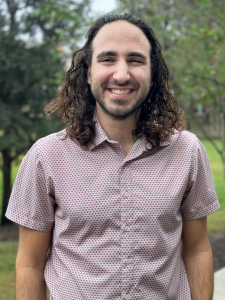Reviewed by Lexie CornerMar 11 2024
A group of physicists has developed a novel method to detect low-frequency gravitational waves, thereby enabling the investigation of the early stages of mergers between supermassive black holes—the most massive objects known in the universe.

Image Credit: Jeff Dror.
The method can detect gravitational waves oscillating once every thousand years, a hundred times slower than any previously measured gravitational waves.
These are waves reaching us from the farthest corners of the universe, capable of affecting how light travels. Studying these waves from the early universe will help us build a complete picture of our cosmic history, analogous to previous discoveries of the cosmic microwave background.
Jeff A. Dror, Ph.D., Assistant Professor and Study Co-Author, Physics, University of Florida
Dror and postdoctoral researcher William DeRocco, University of California, Santa Cruz, published their findings in Physical Review Letters.
Gravitational waves are akin to ripples in space. Similar to sound waves or ocean waves, they vary in both frequency and amplitude, providing valuable information about their source and age.
Gravitational waves reaching Earth can have extremely low frequencies, far below sound waves audible to the human ear. Some of the lowest frequencies detected in the past were as low as one nanohertz.
Dror explained, “For reference, the frequency of sound waves created by an alligator roar are about 100 billion times higher than this frequency – these are very low-pitched waves.”
The team’s novel method of detecting low-frequency gravitational waves involves analyzing pulsars, which are neutron stars that emit radio waves at regular intervals. The researchers hypothesized that by searching for a gradual slowdown in the arrival of these pulses, they could detect new gravitational waves.
By studying existing pulsar data, they could search for gravitational waves with lower frequencies than ever before, expanding the “hearing range” to frequencies as low as 10 picohertz. This breakthrough is an advancement of a hundredfold compared to previously detected nanohertz-level waves.
Although gravitational waves at frequencies around a nanohertz have been detected previously, their origin remains largely unknown. Two theories exist to explain their source. The prevailing idea is that these waves are generated by the merger of supermassive black holes. If confirmed, this would provide researchers with a new tool to study the behavior of these massive objects at the center of every galaxy.
Another theory posits that these waves resulted from a cataclysmic event that occurred early in the history of the universe. By examining gravitational waves at even lower frequencies, researchers may have the opportunity to distinguish between these possibilities.
Looking ahead, the next step is to analyze newer data sets. The datasets we used were primarily from 2014 and 2015, and a huge number of pulsar observations have been undertaken since that time.
Jeff A. Dror, Ph.D., Assistant Professor and Study Co-Author, Physics, University of Florida
In addition to their groundbreaking research, Dror and team plan to leverage the computing power of UF's HiPerGator supercomputer to run simulations on mock data. The supercomputer's immense processing power enables it to efficiently run large and complex simulations, significantly reducing the time required to analyze data.
This study was supported in part by the National Science Foundation and the Department of Energy.
Journal Reference:
DeRocco, W. & Dror, J. A. (2024) Using Pulsar Parameter Drifts to Detect Subnanohertz Gravitational Waves. Physical Review Letters. doi.org/10.1103/PhysRevLett.132.101403.